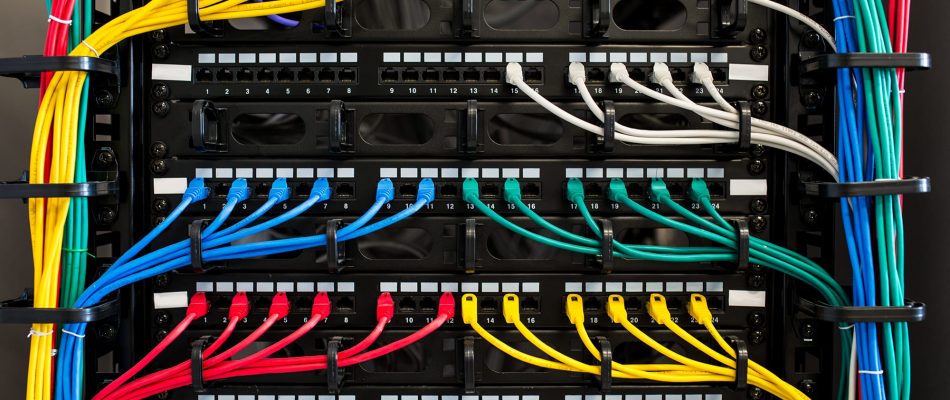Network infrastructure is one of the most important aspects of any business or industry. It enables reliable communications and high-speed data transfer, which are important for modern businesses. It allows them to communicate with the outside world and perform day-to-day tasks effectively.
Many different types of network cables function as the backbone of any network infrastructure, and we will discuss them in some detail today. This will give you an idea of what they are, how they function, and their role in network cabling.
Before we start, always remember to consult the professionals at Communications Solutions Inc. in Jacksonville, Florida, for all your network cabling solutions.
Types of Network Cabling
There are four main types of network cables. Their use depends on different factors, including the environment of their installation, the size of the network, and their specifications.
Being one of the most crucial aspects of any network infrastructure, you need to use the right network cabling for the intended purpose.
Here are the four main types of network cabling.
Coaxial Cables
Coaxial cables or coax have a single copper conductor at the center of the cable surrounded by a plastic dielectric layer for insulation. A layer of braided copper mesh covers this insulation, and the final layer is a plastic jacket, typically black, to complete the cable.
The braided mesh acts like a shield that blocks external electromagnetic interferences from disrupting the signal that is being carried by the cable. The interferences can stem from electrical devices, components, fluorescent lights, and many other sources, including naturally occurring ones.
Coaxial cables are highly resistant to signal obstructions and can effectively carry data wherever intended. For network cabling, coaxial cables can handle greater distances than twisted-pair cables. However, they have complicated installations.
There are two main types of coaxial cables:
- 75 Ohm “thick” coaxial, typically used for video signals
- 50 Ohm “thin” coaxial, typically used for data and wireless communications
The thin variants are commonly used for network cabling and effectively carry data signals over long distances. For comparison, a twisted pair cable may run for around 100 meters, whereas a coaxial cable may run for around 500 meters.
Unshielded Twisted Pair (UTP) Cables
Unshielded twisted pair cables are the most widely used type of network cabling, and they are also highly diverse. They work great for both networking and telephone communications and are capable of carrying high-speed data signals.
Compared to STP cables, their only downside is that they are not as effective in blocking electromagnetic interferences. However, they are less expensive than STP cables because of the lack of added shielding.
There are many different categories of UTP cables used in network cabling, including:
- Cat1
Typically used for telephone wiring.
- Cat2
Can supports speeds up to 4 Mbps and frequently used for token ring networks.
- Cat3
Can support speeds up to 10 Mbps and is used for token ring networks.
- Cat4
Can support speeds up to 16 Mbps and is used for token ring networks.
- Cat5
Can support speeds up to 100 Mbps and typically used for structured cabling.
- Cat5e
Can support speeds up to 1000 Mbps, or 1 Gbps, and it is the most commonly used network cabling worldwide.
- Cat6
Can support speeds up to 10 Gbps and is typically used for close-range, high-speed network cabling.
- Cat7
Can support speeds up to 10 Gbps but, it has better shielding and can run twice the distance of Cat6 cables.
- Cat8
Can support speeds up to 40 Gbps; however, its distance is limited to just 30 meters.
Any business entity opting for Cat6 cables or higher must run complete test reports every 4-5 years or after any major restructuring; this will ensure that the cables are functioning properly.
Shielded Twisted Pair (STP) Cables
Shielded twisted pair cables, or STP cables, are specialized network cabling, typically used for industrial and business communications. An outer insulating jacket contains an inner braided copper mesh for shielding the pairs of twisted cables inside covered in foil.
The added shielding is highly effective at reducing electromagnetic interferences like crosstalk; this makes STP cables ideal for areas with potential interferences. STP cables are also good for expanding distances. However, they are more expensive than their commonly-used counterparts – UTP cables.
Fiber Optic Cables
Fiber optic cables are a completely different type of network cable that utilizes light to carry signals. They have a glass core covered with multiple layers of protective materials. Because they use light to transmit signals, there is no electromagnetic interference involved.
The protective layers are in place to prevent data loss and physical interference or damage. If the glass core gets damaged, the fiber optic can no longer transmit light signals properly. The use of light signals makes them perfect for high-speed transmissions in areas with heavy interference.
Moreover, they can carry signals much farther and much faster than any other type of network cable. Depending on the fiber optic, 100 Mbps can run up to 2,000 meters, and 10 Gbps can run up to 300 meters, making them one of the best network cabling options available today.
The only drawback is that fiber optic cables are very expensive. However, the pricing is gradually coming down over time.
Conclusion
Any business needs to understand the different types of network cabling and their uses to create optimal network infrastructure. The better the network, the better their communications and data transmissions. It is also important that businesses choose network cabling that meets their current needs and can also work with upgraded equipment in the future.
If you want the best network cabling solutions in Jacksonville, Florida, we highly recommend consulting the professionals at Communications Solutions Inc. If you want to learn more about the types of network cabling, Contact Us Today.

